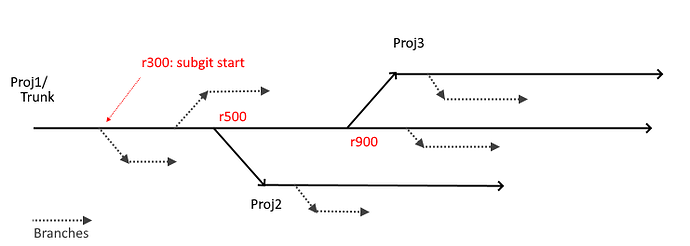Our svn mono repos is primarily centered on our prop. game engine.
When they started their second game, they naturally enough branched /svn/Game1 → /svn/Game2 and continued merging engine and tool stuff between the two. And so on for Game3, etc.
When I set up subgit mirroring tho, I had to split these into discrete git repositories, with the result that they all have disconnected git histories.
It occurs to me that this is essentially svn-forking.
Would it be possible for subgit config to allow specifying forks?
forks = true
parent_fork = /svn/Game1
child_forks = /svn/Game[0-9]+ /svn/Game/* /svn/well/why_be_consistent_eh
This would be equivalent to subgit converting /svn/Game1 → Game1.git, but when you reach the copy that creates Game2.git, you would simply clone Game1.git to create Game2, and Game1->Game or Game2->Game3.
It seems like the tricky part would be merges and a potential actual blocker would be: what if someone did a merge of
/svn/GameB-> /svn/GameA+/svn/GameC … it would be hard to do that, but never underestimate smart people’s ability to do really stupid things :)
